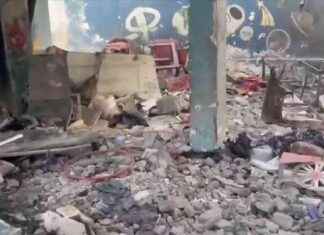LIMA, Peru — Hipolito Tica had worked for many decades to finally buy a house in Lima’s working-class neighborhood. He was faced with the problem of “the neighbors”, as he called the hundreds-old mummies below.
They were known to the mechanic since 1996, when he attempted to dig a latrine there. The lot is just a few meters from El Sauce archaeological site at the eastern edge Peruvian capital.
Tica, who was taking a break from lugging bricks, told The Associated Press that he had been trying to loosen the soil with a rod of metal when suddenly the ground began to crumble.
He said, “I got out there fast like a spider,”
Tica grabbed a flashlight to see the hole at his feet. It was 5m (16ft) deep and 3m (10ft) wide.
He said, “I saw some bundles – the light was bright enough. They were funerary bundles.”
He was unsure of what to do or who to tell.
He had just moved in and built a basic adobe structure without a title, like nearly 500,000 others around Lima’s edges. He was concerned that he might have drawn the attention of authorities to an archaeological find, which could lead to him losing his home. He claimed they didn’t pay too much attention. He did not press the issue.
He decided to live with the neighbors and cover the hole with an old front door, a piece of carpet he had gotten from an old car, and some dirt.
He said, “Nobody noticed the hole.”
Tico and his neighbors slowly gained rights to their property over the years. He wanted to build a house out of brick and cement, and applied with neighbors for water and sewer service. This required approval from the Secretary in Culture and a local Museum to ensure they wouldn’t damage archaeological remains.
Tica, who was not educated, began learning about the Incas, and other early Peruvian civilizations.
The correct way to build a house is to lay a foundation and fill in the holes where the bodies are buried.
He said, “I was concerned.” Friends suggested to him that he cover the area with cement and then he was done.
“But I had a nagging concern that future generations wouldn’t be able to know much about this area.” He said that part of history was here.
He called Julio Abanto, an archaeologist from the Ruricancho Culture Institute, to ask him about his research and he told him that he had a burial.
Abanto and his crew obtained government permission to dig an emergency hole.
The archaeologist dug himself into the hole using ropes. He found three bundles that contained more than one person — it’s still not clear how many — belonging to an Inca culture more than 500 years old.
One of the skeletons contains a kind of crown, bits and silver bracelets, as well spoon-like tools used for coca leaf. It has an image of a bird eating at the head of a fish. A type of mollusk shell was also found in the area.
Abanto stated that the finds were likely to belong to local elites who were conquered by Incas archaeologists.
Tica’s bricklayers are now helping to build the house. They chew coca leaves as they go, a regional custom. Sometimes, they even bury some leaves at the newly filled-in gravesite.
Abanto stated, “It’s possible in our city to find surprising heritage which helps us reconstruct our local past.”







